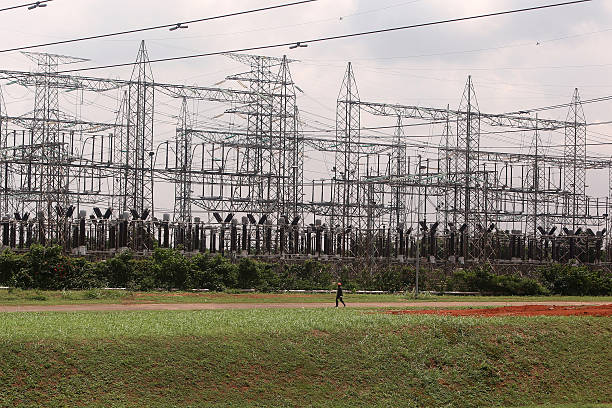Adebayo Adelabu, the country’s minister for Power has shared a statement on what caused the national grid collapse that has resulted in the general power outage experienced all over the country.
According to him, there was a fire at the Kainji/Jebba line, but the outbreak has been taken care of.
He wrote:
- “At 00:35Hrs this morning, a fire outbreak with an explosion sound was observed on Kainji/Jebba 330kV line 2 (Cct K2J) blue phase CVT & Blue phase line Isolator of Kainji/Jebba 330kV line1 was observed burning.
- “This led to sharp drops in frequency from 50.29Hz to 49.67 Hz at 0:35:06Hrs with Jebba generation loss of 356.63MW. Kainji started dropping load from 451.45 MW at 00:35:07Hrs to zero.
- “At 00:41Hrs frequency dropped further from 49.37 Hz to 48.41 Hz resulting in system collapse of the grid. We are on top of the situation and speedy restoration is in progress.
- “The fire has been fully arrested and over half of the connections are now up and the rest will be fully restored in no time. My sincere appreciation to those who responded or expressed concern via different channels and the team of Engineers for their prompt response to the situation and the work done so far.
- “Let’s get the restoration work completed as soon as possible. The delay in the update was deliberate, so as not to cause panic and to also be able to update on the progress of remedial actions taken so far. This is to ensure economic and security saboteurs don’t take advantage of every situation reported.”
Efforts made to reduce national grid collapses
On August 29, 2023, the Transmission Company of Nigeria (TCN) announced that the country had gone 400 days without recording a national grid system collapse, stating that the last occurred in July 2022.
According to the TCN, it had improved collaboration and communication lines alongside other stakeholders in the Nigerian Electricity Supply Industry (NESI).
The TCN also noted that its in-house engineers have implemented the IOI/VPN for Enhanced Grid Visibility through an interim solution that leverages the Internet of Things (IoT) sensors and devices.
This real-time monitoring capability plays a crucial role in proactively identifying potential issues, thereby preventing disruptions.
It claimed there are ongoing efforts dedicated to expanding this visibility by integrating additional transmission stations into the IoT infrastructure.
The company also claimed to have achieved significant milestones in enhancing infrastructure and ensuring N-1 contingencies.
This transformation, it said, has evolved the grid from a radial network into a loop system, thanks to substantial investments in construction and the digitalization of critical circuits.
The comprehensive modernization of transmission infrastructure, including the commissioning of new transmission stations and the installation of power transformers, has greatly fortified grid resilience and operational flexibility.
The company also said it prioritized the establishment of an advanced maintenance regime, encompassing regular inspections, swift repairs, and proactive preventive maintenance strategies.
These measures, it said, are essential in safeguarding the integrity of power plants, transmission lines, and substations.
This proactive approach not only sustains infrastructure health but also upholds operational reliability and promotes efficient power flow.
